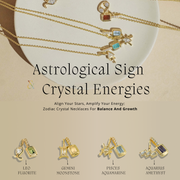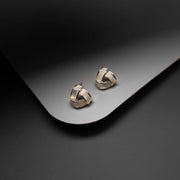Diamond History and Symbolism
Diamonds now occupy a central place in jewelry, and it is fascinating to explore their history and the evolution of their symbolism.
Diamonds originated in India, where rich diamond deposits are found around the Krishna, Godavari and Penna rivers. Diamonds have been used as religious symbols and valued for centuries. Buddhist texts from the 4th century BC define diamonds as gemstones. Other Indian texts also record their hardness (scratching metal), brightness and ability to reflect light. Initially, diamonds were mined mainly in river sediments in India.
Later, it was not until 1867 that diamonds were discovered in South Africa, which is related to the path of an extinct volcano near Kimberley. Kimberlite is named after the diamond mining. This discovery made South Africa the world's main diamond mining center, replacing the increasingly depleted India.
It is worth noting that there was a time before diamonds symbolized true and lasting love. Beliefs varied greatly among ancient cultures.
Ancient Egyptians
The Egyptians were known for their grand funerals, where they gave their deceased loved ones food, fine clothes, gold and diamonds to rest in peace.
Ancient Far East
Diamonds were prized for their mirror-like luster and hardness, and were believed to be powerful talismans against disease, poverty, evil spirits, fire, snakes, rats, poison and other bad things.
Ancient Greece
In ancient Greece, people believed that diamonds were tears of the gods or fragments of meteorites. Philosopher Plato believed that diamonds were creatures that contained the spirits of the gods and possessed extraordinary powers, including the ability to reproduce.
Greek mythology even records the scene of Perseus beheading Medusa with a diamond-studded sickle. As a result, the ancient Greeks had a complicated relationship with diamonds - they were both awed, feared and even cherished.
Ancient Rome
The Romans believed that diamonds were indestructible, unable to be pierced by swords and would not break under their feet. They went a step further and wore diamonds as part of their armor, believing that they gave them invincible power. Leaders such as kings often wore breastplates covered in diamonds - a practice that was later continued by medieval knights.
The Romans also valued diamonds for their natural beauty and extreme rarity. Diamonds were initially brought in small quantities from India, and due to their scarcity, they became a powerful status symbol in Roman society.
Middle Ages
As trade routes expanded from the 10th century AD, diamonds became an important symbol of status and power. During this period, the concept of diamonds as a symbol of wealth and intrinsic value gradually solidified, moving beyond deeper symbolism. Also during the Middle Ages, gemstones, including diamonds, began to be associated with marriage.
Scientific Understanding
In 1813, an important scientific study found that focusing sunlight onto a rough diamond with a lens could cause combustion and reveal its chemical composition - carbon. This discovery confirmed that carbon formed the hardest rock in nature after being subjected to extremely high pressures millions of years ago. This understanding further enhanced the reputation of diamonds and made them highly valued for their unique properties.
Where are Diamonds found?

Natural diamonds formed deep within the Earth. Diamond-bearing rock is found in many places across the globe where volcanic activity carried them to the surface. Sometimes, gems are still in hard rock. Other deposits have large quantities of diamonds that weathered out of their host rock and washed into surrounding areas, some carried into the ocean to be recovered by specialized ships.
While India is no longer a major player in terms of diamond mining, it is credited with introducing the gem to the world. In fact, it remained the only major source of diamonds globally until the 18th century. The diamonds that you will find on the market today may not come from India, but an estimated 90% of them are processed there.
Today, there are important diamond mines on many continents. Among these sources is Brazil, the first country to overtake India as the primary diamond supplier. Unlike the warm climate of South America, Canadian miners toil in incredibly cold conditions to extract the gem from deep open-pit mines. African mines churn out millions of carats per year in places like Botswana, Namibia, and Sierra Leone and some of the largest diamonds ever uncovered come from South Africa. There are a few places in Russia that house massive deposits.
While yellow and brown diamonds are commonly found alongside colorless gems, many of the other fancy-colored diamond hues come from specific places, rather than popping up randomly, because they require unusual conditions to form. For instance, the recently shuttered Australian Argyle mine was a primary source of rare red and pink diamonds.
What color is Diamond?

About 98% of the world's diamonds are colorless, often with traces of yellow, brown or gray. The fewer these impurities, the rarer and more valuable the diamond. GIA's D-Z scale (D is colorless, Z is the most obvious color but still colorless) accurately measures the impact of color on price.
Although high-color diamonds (such as D, E, F) are more valuable and favored in white metal settings, color preference is subjective, and some people like the effect of warmer tones in settings such as rose gold.
The remaining 2% are colored diamonds, which come in a variety of colors (pink, blue, green, etc.) and have complex causes. Their value depends mainly on hue (basic color), followed by tone and saturation (rich and bright ones are preferred).
Yellow and brown are the most common, and their prices are sometimes close to those of colorless diamonds; while other colors (such as pink and blue) are extremely rare, and the top ones can cost up to millions of dollars per carat.
Types of Diamond
Natural diamonds

Natural diamonds are the most widely known type of diamond. They are formed under extreme pressure and heat deep in the Earth's core. They are made of pure carbon crystals, are usually colorless, and date back billions of years.
They are believed to have been first discovered in India in the 4th century BC and traded along the Silk Road, which opened the history of diamonds.
It takes hard work for miners to recover these treasures buried thousands of meters underground. When we talk about diamonds in daily life, this is usually what comes to mind.
Laboratory-grown diamonds

Laboratory-grown diamonds (also known as artificial diamonds or synthetic diamonds) are the result of scientific and technological progress. Scientists have successfully grown diamonds in a strictly controlled experimental environment by simulating the conditions of natural formation (mainly using high pressure and high temperature HPHT or chemical vapor deposition CVD).
These diamonds are almost indistinguishable from natural diamonds in terms of physical, chemical and optical properties, but are significantly cheaper - from about 30% cheaper initially to 50%-60% cheaper now, and may even reach 70% or more in the future.
For example, two diamonds of the same size, one natural carat, might sell for $6,000, while a lab-grown diamond would only cost about $2,000. They offer new options to the market.
Treated Diamonds

These diamonds are essentially natural mined diamonds, but their raw condition (e.g., significant inclusions or poor color) makes them difficult to sell directly.
Therefore, they are artificially treated to improve their appearance and marketability. Common methods include:
- Fracture filling (filling cavities with special materials to make the diamond look purer)
- Color enhancement (changing or intensifying the color through techniques such as coatings)
These treatments are designed to make the diamond look closer to perfection, but the price is much lower than that of a natural, untreated diamond of the same quality. It is important to note that some low-priced black diamond jewelry on the market (such as rings priced around $1,000) often uses diamonds that have been dyed to cover up large inclusions.
Natural Colored Diamonds

Natural colored diamonds are the rarest and most precious holy grail in the diamond world, with only one in ten thousand found. Their amazing colors (such as pink, yellow, blue, green, red, purple, etc., and combinations of colors) do not come from impurities, but are caused by foreign particles being trapped in the crystal structure during the formation process.
In the past decade, with the celebrity effect, the demand for colored diamonds such as pink diamonds and yellow diamonds has surged. They are distributed in a specific area, for example, about 90% of the world's pink diamonds are produced in Australia.
Due to their extreme rarity and high value (such as real natural black diamonds can be as high as $3,000 per carat), colored diamonds are also divided into three categories: natural, treated and laboratory-grown. They are unparalleled treasures given to humans by nature.







